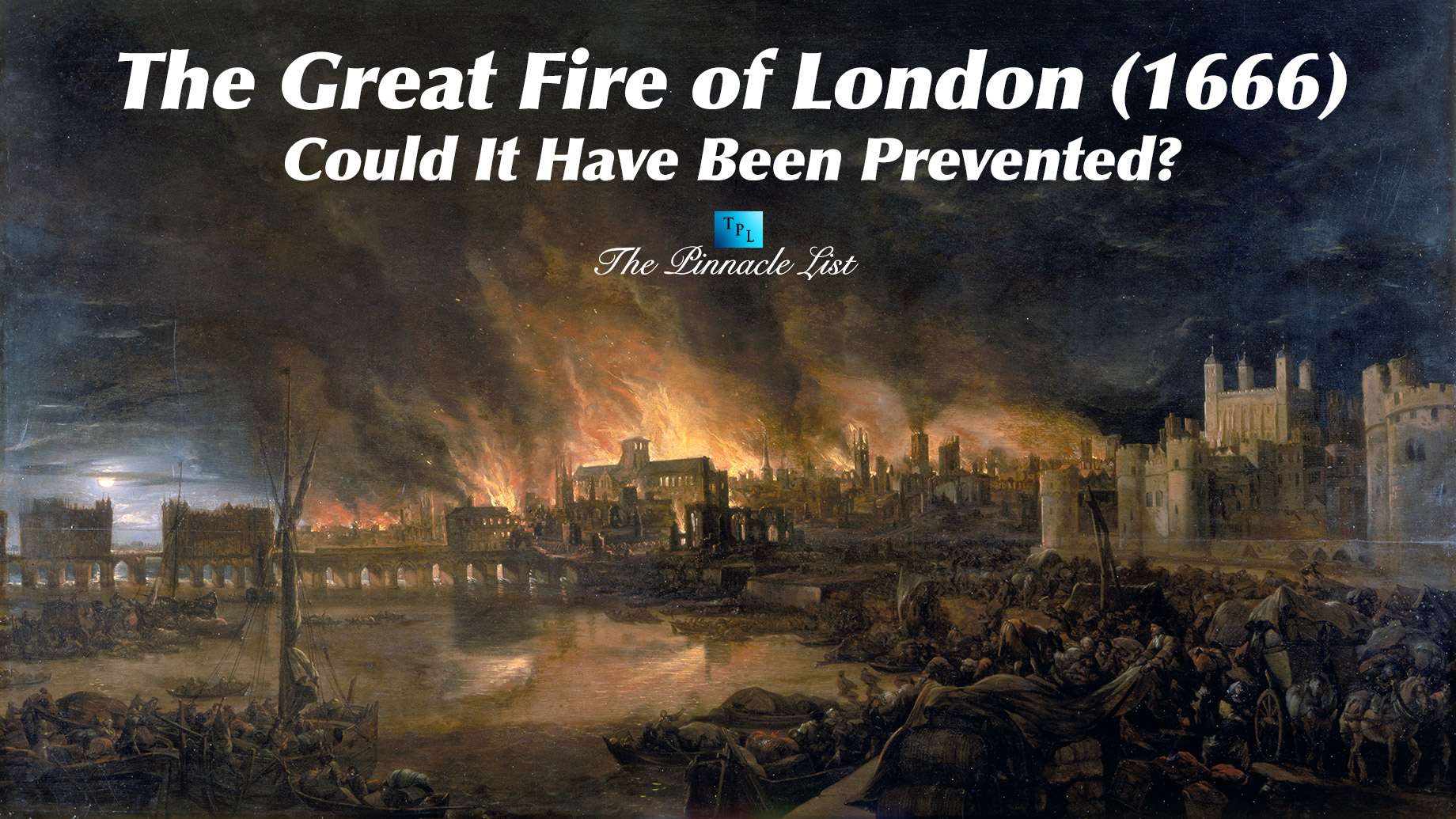
The Great Fire of London in 1666 was one of the most devastating disasters in the city’s history, destroying thousands of homes and key buildings over four days. It started in a small bakery on Pudding Lane and spread rapidly due to wooden structures, narrow streets, and strong winds. But could this catastrophe have been prevented? This blog explores the factors that contributed to the fire and what measures could have stopped it.
Factors That Contributed to the Fire
1. Flammable Building Materials
London in the 17th century was primarily constructed of wood and thatch, highly flammable materials that allowed fires to spread quickly.
2. Narrow and Overcrowded Streets
Buildings were packed closely together, with overhanging upper floors creating tunnels of fire. The lack of urban planning made it nearly impossible to contain the flames.
3. Lack of a Proper Fire Brigade
Before the Great Fire, firefighting was largely an informal effort, with individuals using leather buckets and hand-operated water pumps. There was no organized fire service to respond swiftly.
4. Strong Winds
High winds fueled the flames, causing the fire to spread faster than it could be controlled.
5. Delayed Government Response
The authorities were slow to take action, hesitating to order firebreaks (demolishing buildings to create gaps) until the fire was already out of control.
Could the Fire Have Been Prevented?
1. Better Building Regulations
Had stricter building laws been in place—such as banning wooden structures or requiring firebreaks in city design—the fire might not have spread so rapidly.
2. Improved Firefighting Infrastructure
A professional fire brigade with trained personnel and adequate equipment could have tackled the fire more effectively.
3. Stronger Emergency Planning
Faster decision-making and immediate action on creating firebreaks could have slowed or stopped the fire earlier.
4. Public Awareness and Preparedness
Greater awareness of fire risks and preventative measures, such as storing water and maintaining fire-resistant barriers, might have reduced the damage. Today, businesses and homes alike can benefit from conducting a Fire Risk Assessment to identify potential fire hazards and implement necessary precautions to prevent similar disasters. For more information, you can refer to the Guide to Fire Insurance to Protect Your Home.
The Aftermath and Lasting Impact
The disaster led to significant changes in London’s urban planning and fire safety laws. The Rebuilding Act of 1667 introduced fire-resistant materials like brick and stone, wider streets, and organized firefighting efforts, paving the way for modern fire safety standards.
Conclusion
While the Great Fire of London was a tragic event, it taught valuable lessons in fire prevention and urban planning. With better building materials, a formal firefighting force, and stronger leadership, the disaster might have been minimized or even avoided altogether. Today, London’s fire regulations owe much to the lessons learned from 1666, ensuring that such a catastrophe never happens again.